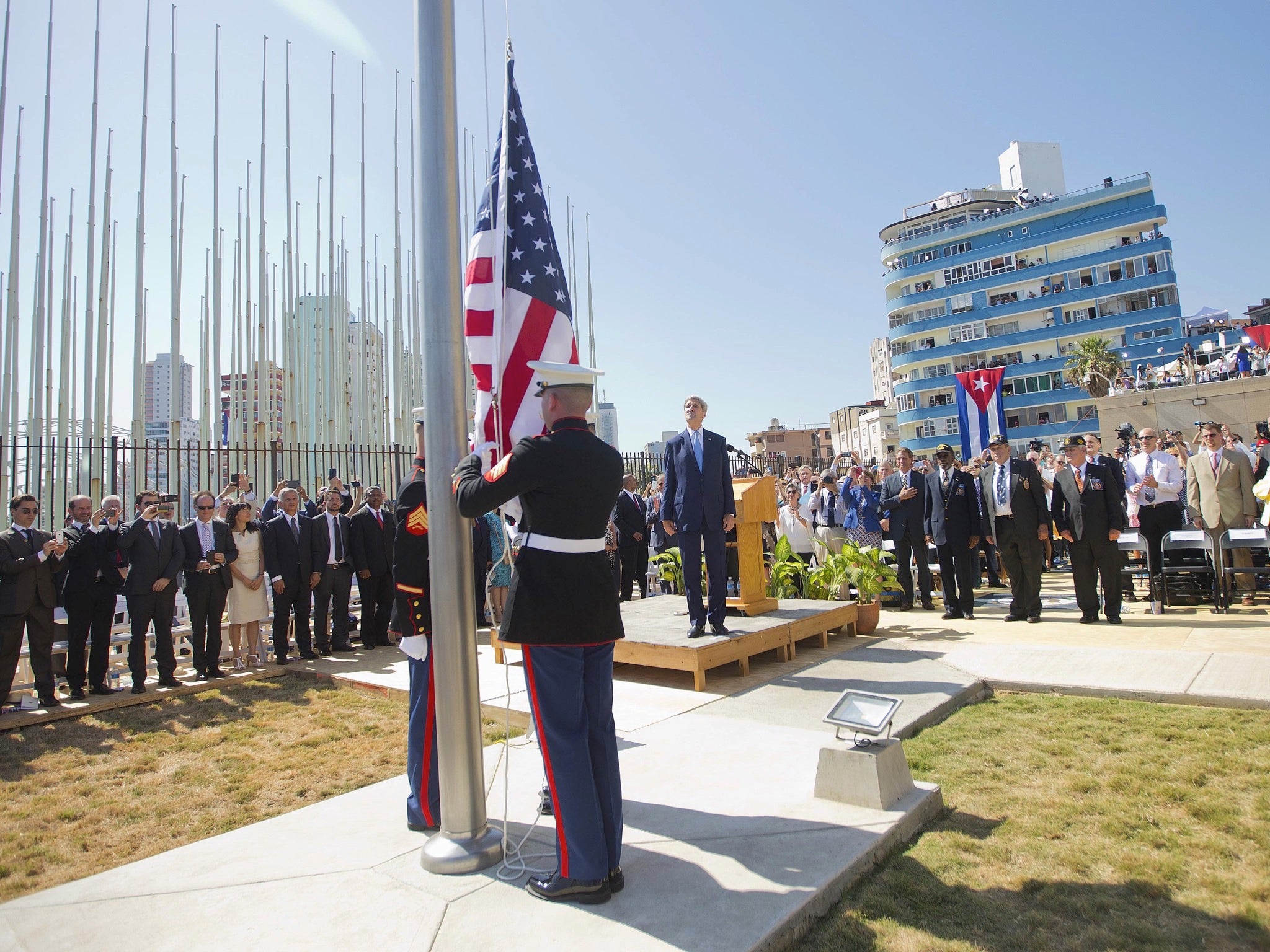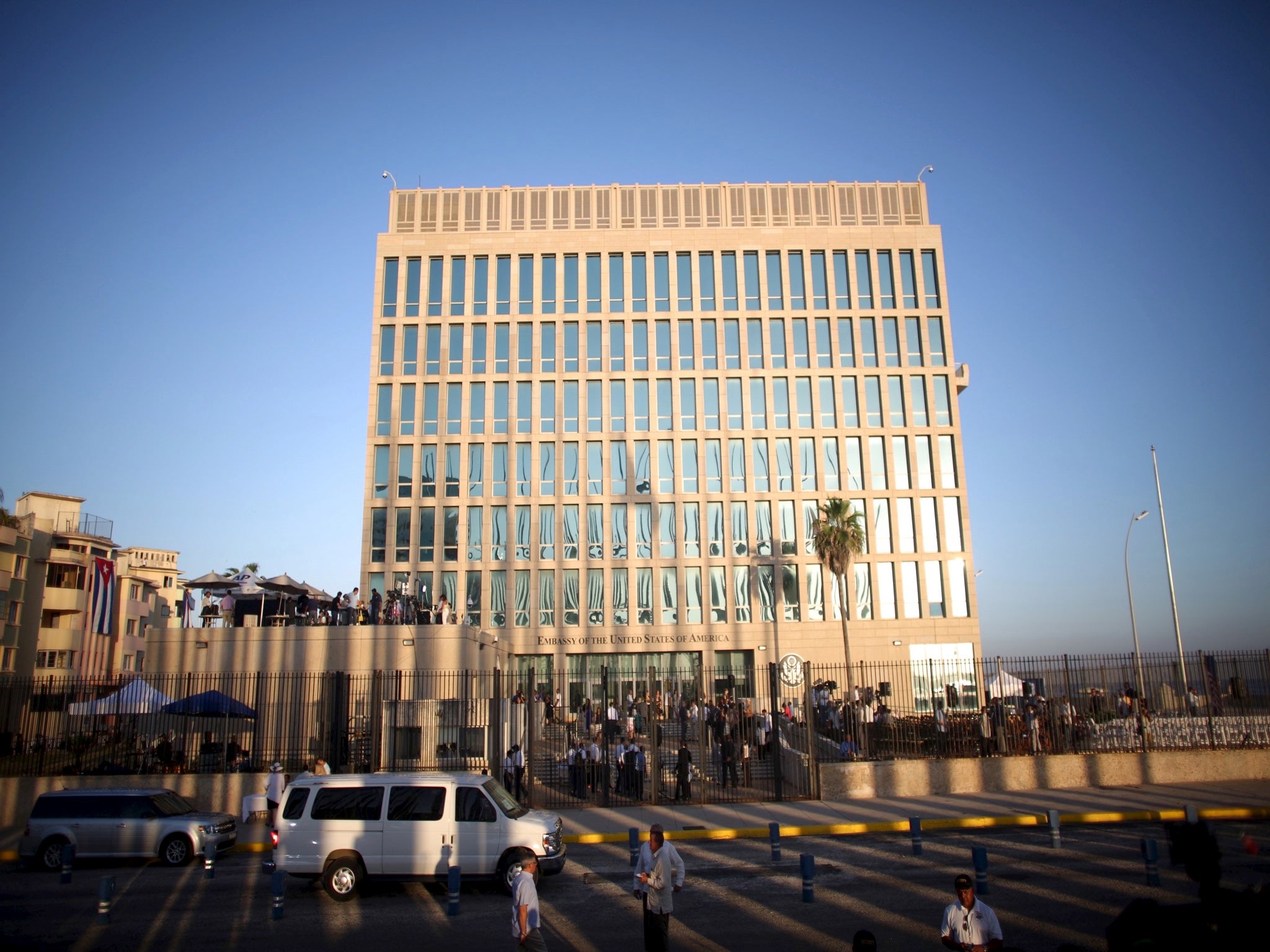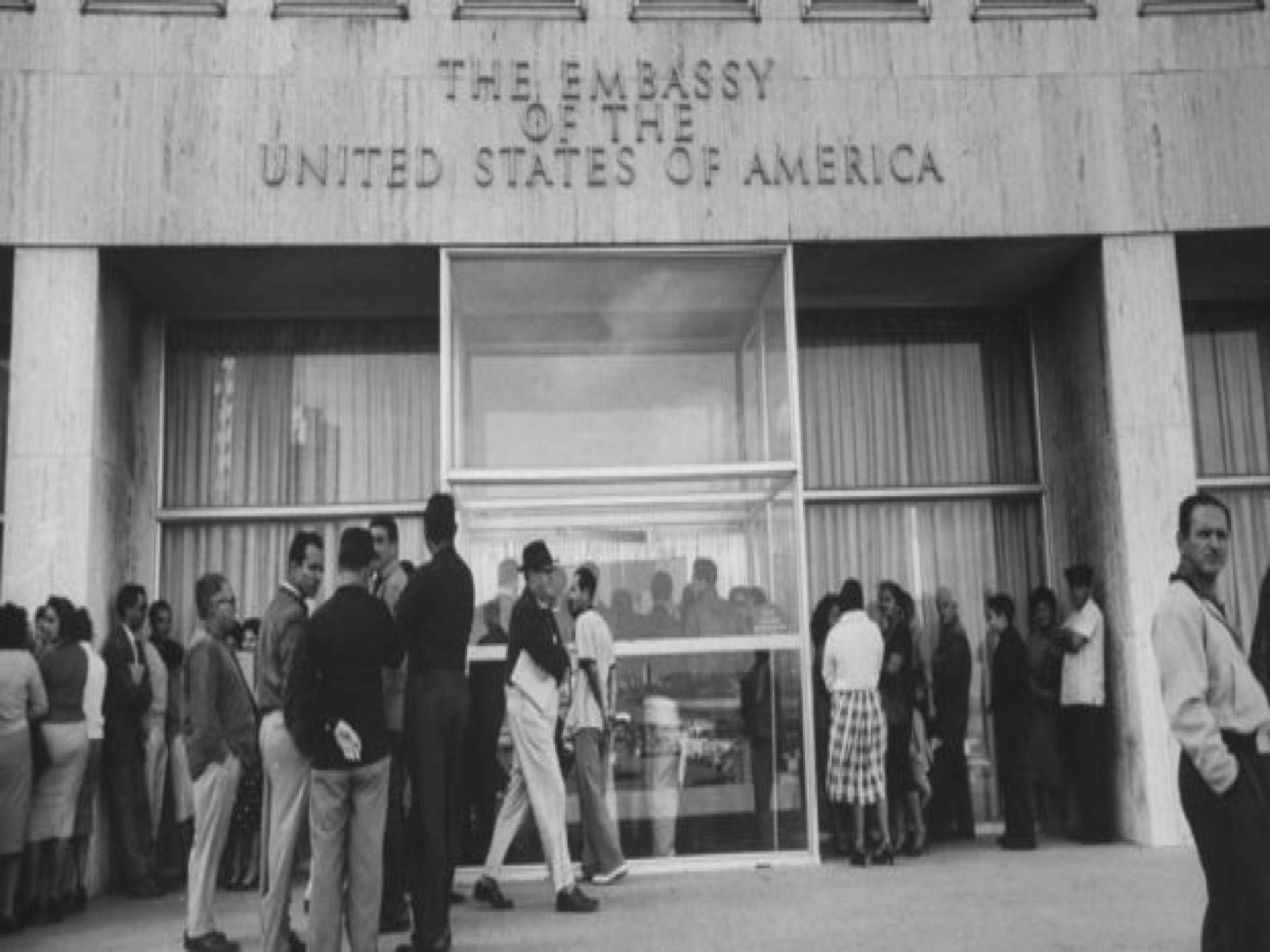US reopens embassy in Cuba after more than 50 years of hostility
The move follows a behind-the-scenes operation to improve relastions

Your support helps us to tell the story
From reproductive rights to climate change to Big Tech, The Independent is on the ground when the story is developing. Whether it's investigating the financials of Elon Musk's pro-Trump PAC or producing our latest documentary, 'The A Word', which shines a light on the American women fighting for reproductive rights, we know how important it is to parse out the facts from the messaging.
At such a critical moment in US history, we need reporters on the ground. Your donation allows us to keep sending journalists to speak to both sides of the story.
The Independent is trusted by Americans across the entire political spectrum. And unlike many other quality news outlets, we choose not to lock Americans out of our reporting and analysis with paywalls. We believe quality journalism should be available to everyone, paid for by those who can afford it.
Your support makes all the difference.It would have been all-but unthinkable, even 12 months ago.
But on Friday, the US hoisted the Stars and Stripes over its newly reopened American Embassy in Cuba, the culmination of a remarkable behind-the-scenes diplomatic manoeuvre designed to end more than half a century of hostility.
There had been wrong on both sides, Secretary of State John Kerry suggested on Friday morning.
He claimed Cuba would be better if it existed as a multi-party democracy rather than a one-party system still dominated by the octogenarian brothers who led the country’s revolution more than 50 years ago.

“We remain convinced the people of Cuba would be best served by a genuine democracy, where people are free to choose their leaders, express their ideas, practice their faith,” said Mr Kerry.
Yet he acknowledged too, the Bay of Pigs invasion, one of more than 200 apparent attempts by the US to dislodge or assassinate Fidel Castro. “President Kennedy accepted responsibility,” he said.
Hundreds of Cubans outside the embassy cheered as Mr Kerry spoke. The United States Army Brass Quintet played The Star-Spangled Banner and the flag rose alongside the building overlooking the Malecon seaside promenade, the Associated Press said.

“We agree with what Kerry said,” said Julio Garcia, a 51-year-old mechanic. “More democracy, elections, we hope for that to come with this diplomatic opening.”
Dissidents were not invited to the embassy ceremony, avoiding tensions with Cuban officials who typically boycott events attended by the country’s small political opposition.
The State Department said it had limited space at what it called a government-to-government event, and invited dissidents to a separate afternoon flag-raising at the home of the embassy’s chief of mission.
Mr Obama and Raul Castro, 84, the current president and brother of 89-year-old Fidel Castro, announced on December 17 that they would re-establish diplomatic ties 54 years after the flag was taken down from the embassy.
Out of view, diplomats had been working to restore ties. The US business lobby has been keen to end sanctions that have prevented American companies from operating there.
Mr Obama also said he would be moving to empower the Cuban people by loosening the US trade embargo on Cuba through a series of executive actions that make it easier for American citizens to travel to the island and trade with its growing class of private business owners.
Join our commenting forum
Join thought-provoking conversations, follow other Independent readers and see their replies
Comments